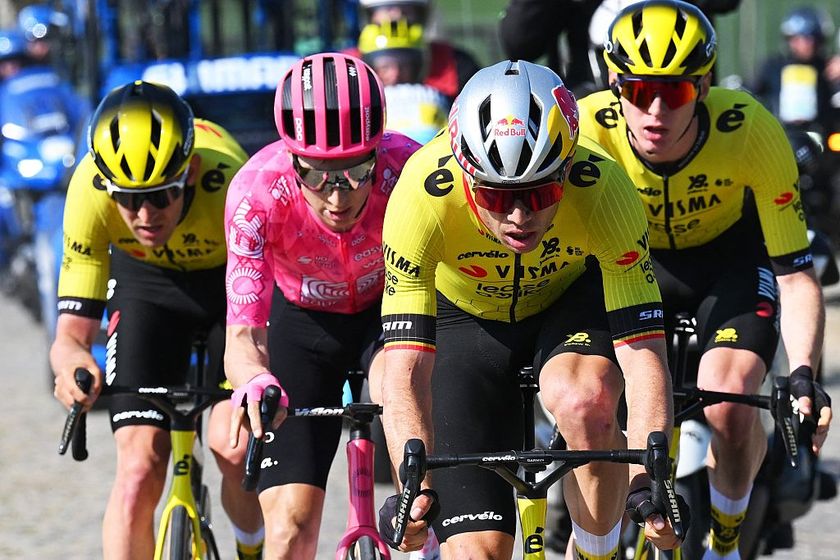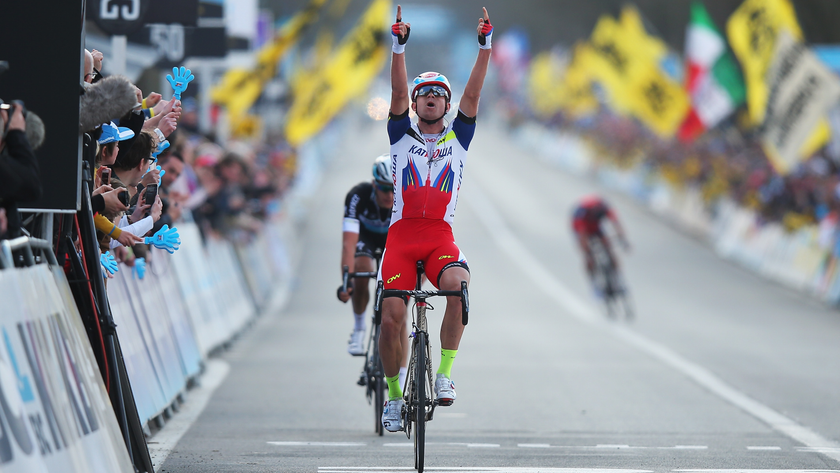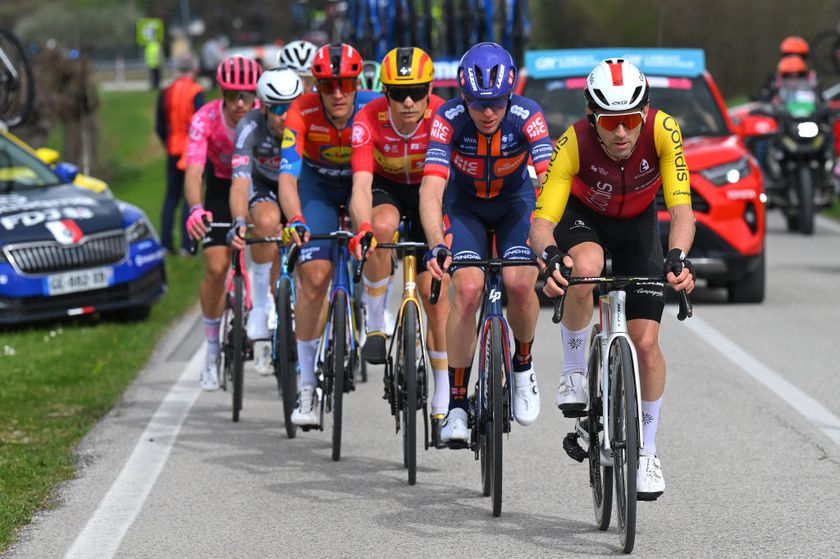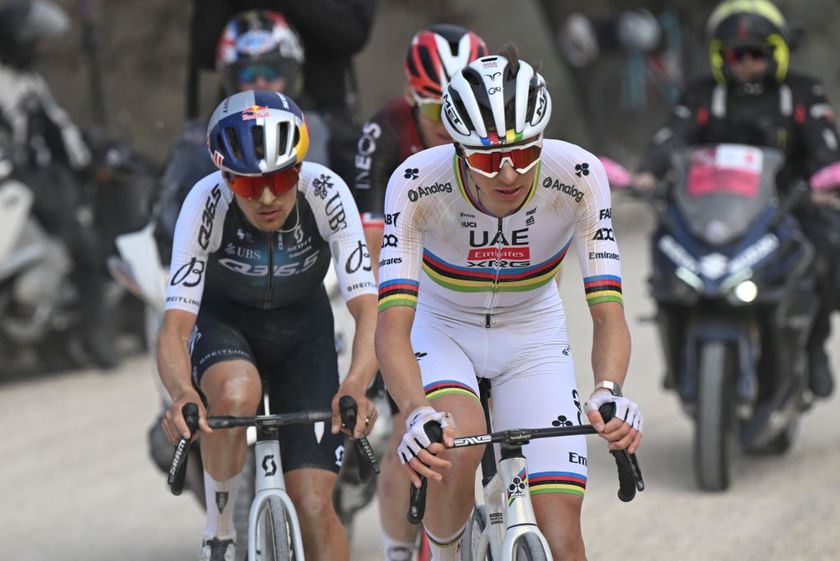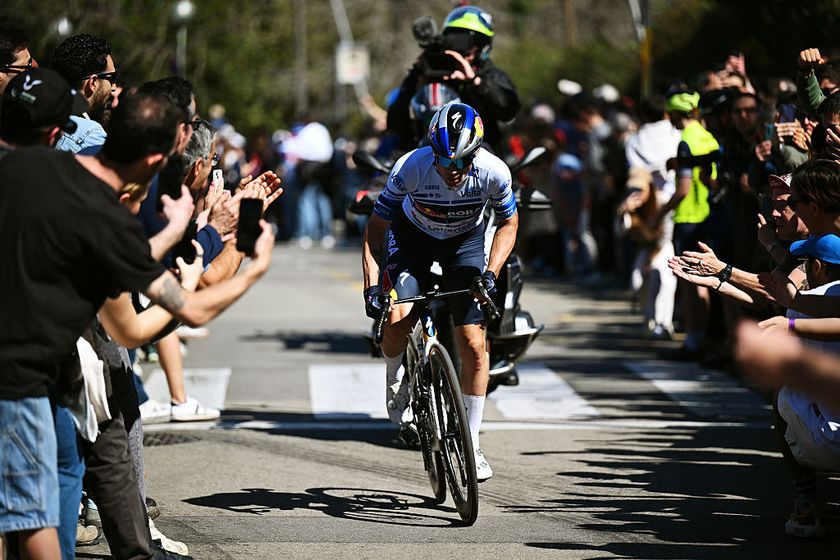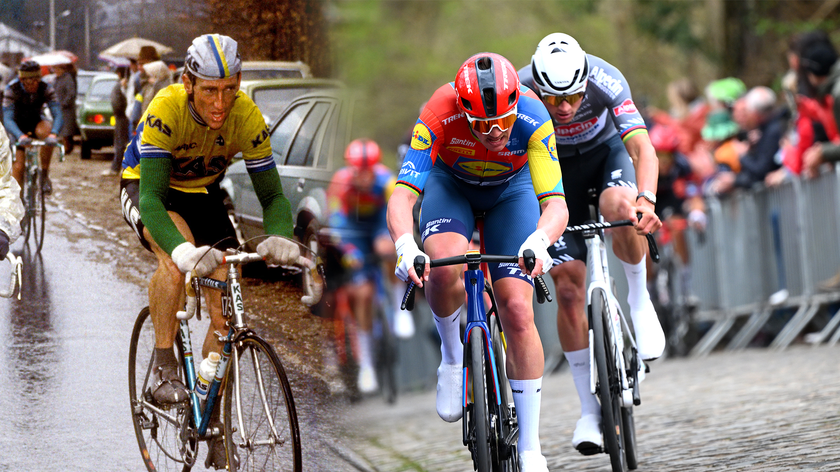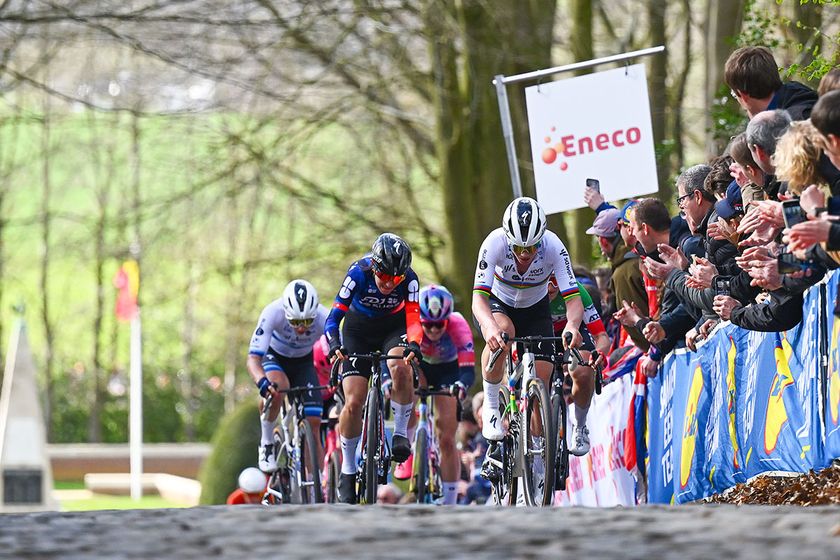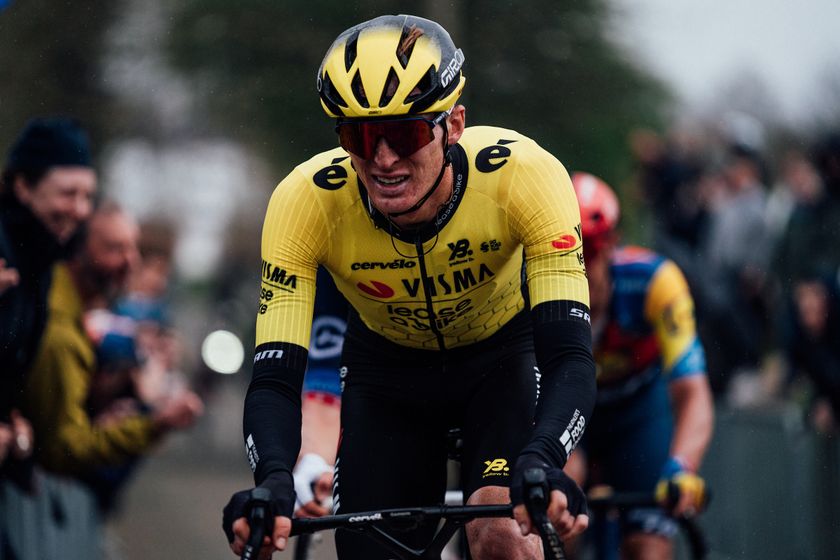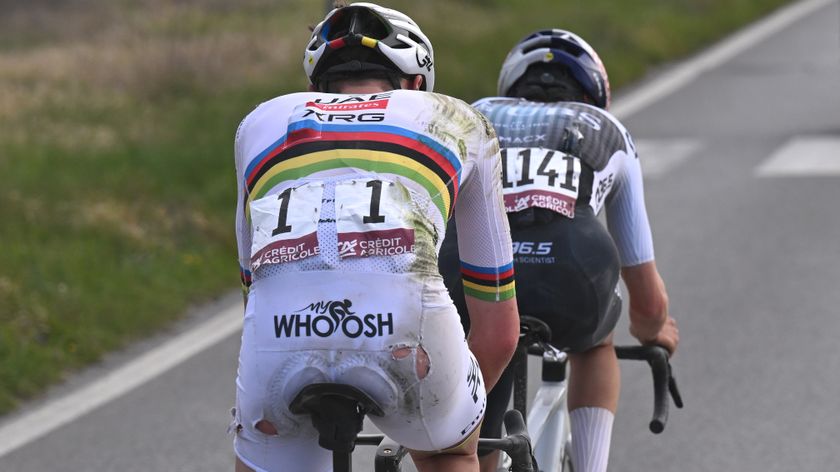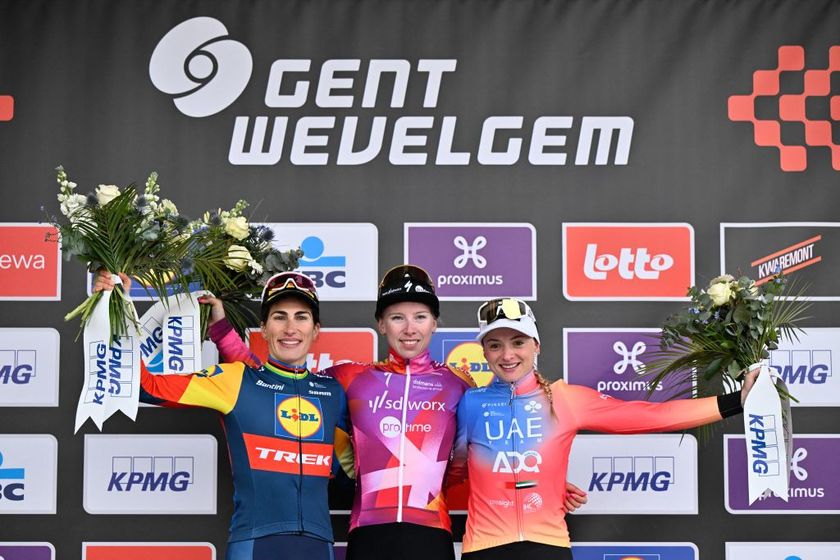Tackling the cobbles, and surviving
Continental recently invited a group of journalists to brave a few 'easy' sectors of cobbles from...
Tales from the peloton, May 10, 2005
Continental recently invited a group of journalists to brave a few 'easy' sectors of cobbles from the Paris-Roubaix parcours. All survived to tell the tale. Gerard Knapp reports.
If I can offer any advice, I think it's best not to think about it. It's not going to change anything, so you may as well as go with the flow.
I'm talking about the hour or two before you throw a leg over a bicycle and head onto a sector of pavé from Paris-Roubaix, because if it's your first time, it's very unlikely you will have experienced anything like it.
As our VW Transporter belted along the French motorway at 180kmh en-route to Viesly, the small town that marks the beginning of sector 25 of the pavé of Paris-Roubaix, the group of cycling journalists taking part in this largesse, courtesy of German tyre manufacturer Continental, chatted - somewhat nervously, I suspect - about previous riding experiences, races and conquests.
My invitation for anyone else to join me in last wheel went unanswered. Oh well. Fine then. We were to drive to a town called Viesley, where sector 25 of the P-R cobbles started, and then do sectors 24 and 23, before turning back to Viesly.
In my jetlagged-lack-of-sleep fog, I was somewhat transfixed by the speedometer of the VW - one of three identical vehicles Continental have for cycling promotions - and the snow (!?) on the side of the road and in the fields. Great. That's perfect. Reminds me of Sydney, that does.
Get The Leadout Newsletter
The latest race content, interviews, features, reviews and expert buying guides, direct to your inbox!
However, my concern about our relative speed was put into perspective as a Thalys (Belgium's version of the TGV) went past at over 300kmh, making the Transporter feel like it was stationary. No matter how fast you're going, there's always someone going quicker, even at 180km/h.
We arrived at Viesly, and the Continental crew had some 25 choice ex-pro team bicycles ready - except for pedals - all fitted with Conti's new 25mm tubular race tyre, called the 'Competition', but with an extra layer of puncture protection material called Vectran. These were the same tyres, inflated to 6.5 bar, that would be going on Phonak, T-Mobile, Saunier-Duval and Credit Agricole's bikes in Paris-Roubaix the following day.
I was thinking that an early flat may be convenient, a 'honourable discharge ', if you like, but that didn't happen. No flats - or spills, for that matter - were recorded. Conti had also supplied the journos with a complete set of matching cycling clothes, and when I first received them, I thought I 'd never use it all.
Wrong. Emerging from the Transporter into the occasional weak sunshine, it was estimated the temperature was about 4 or 5°C, and that's out of the 50kmh wind that was blowing.
This was shaping up to be one fun day. To stay warm, I used every piece of clothing I was given, and the ensemble for the ride included: arm warmers, leg-warmers, thermal undershirt, bib-kicks, jersey, full length bib-tights made from 'Roubaix' fabric, a thermal Nalini jacket and topping it all off, a nice wind-breaker gillet.
It was more cycling clothing than I'd ever worn at one time, and being a Continental gig, it would be impolitic to compare myself to a certain mascot, so let's just say I was rather blimp-like. OTOH, if I fell off, I did have a fair bit of protection.
Then to the bicycle, a T-Mobile Giant with SRM cranks completed the whole foreign experience: it had 172.5mm cranks, I use 170s. No big deal. It had STI, I use Ergo-power. It had the front brake on the left, whereas my bikes have always had it on the right (as is tradition in Australia and the UK).
The whole experience was foreign: the environment, the bike set-up and last by no means least, the 'road'.
Nothing will prepare you for that first kilometre of riding in earnest on pavé. You hit it at 30kmh and after the first few seconds, the world darkens as you realize it's not going to change. Pedaling has become twice as hard. The bicycle wants to spit you off. It is not a little rough patch, like a succession of potholes, or an urban cobblestone road in any European city. No. This hammering will now last for three minutes or more. At first, it was hard to breathe through clenched teeth, but I had to do that otherwise my teeth banged together.
The bike bounces around in your hands, the saddle whacks against your backside and pedaling difficulty increases enormously (probably not helped by being over-dressed). The shock of hitting that first 1.8km sector will stay with me forever. As will the feeling of reaching bitumen when it ended. "Have I gone to heaven? I feel like I'm riding on a cloud."
The first thing to do is remove anything that's not bolted down, because it will fly off or annoy you within seconds. Like sunglasses. They banged up-and-down on my nose as the shocks went through my body and up into my head; serving only to accentuate the vibration. 'Do I grip the 'bars hard? No, that kills the wrists. How about loose? No, not too loose as the 'bars can shake free of your hands.
You're told to push a big gear, not let your backside really rest on the saddle and let the 'bars have a bit of a party on their own. Also, the pros say to ride on the crown - the bumpy center-section - because it's safer than in the wheel-tracks, which can turn into muddy trenches.
Some of our group used the crown, many used the 'shoulder', but I'm definitely in favour of riding the crown as trying to change direction is how you fall. On the crown, it's bumpy but usually free of big potholes.
Now, I've cycled on cobbled pavement in cities and towns, raced on 'dead' country roads and across Australia's dreaded 'pick-a-plank' bridges, but nothing was like that first session of pavé. In terms of 'character-building' two-wheeled terror experiences, the closest thing I can compare it to was having a 900cc BMW get speed-wobbles on a corrugated desert track at 100kmh. At least I survived the pavé.
Also, it's recommended you don't stop on the pavé, and unclip your shoe from the pedals, because trying to re-engage your foot as you set off is quite possibly one of the hardest things you'll ever have to do on a bike.
'Hartie' hammers
On our excursion, the group of journos would wait at the end of each sector, as we slowcoaches caught up. At the front, Hartmut Bolts, brother of Udo and himself a former pro rider and now a Continental employee, was leading the fitter riders, letting them charge ahead and live out their Museeuw fantasies, until he put the hammer down on one sector and effortlessly dropped them, offering a polite reality check.
'Hartie' showed what a real gentleman he is by then riding at the back with the slow blokes, such as token southerner, recounting stories of racing in the Sun Tour and famous bits of Aussie slang, like "no wucking furries". A real pro, he rode at my 'checking-out-the scenery' speed, never half-wheeling, and offering early directions in the back-roads of northern France.
By the time we returned to Viesly, I hadn't exactly adapted to the conditions, but I was ready to keep going, minus two or three layers of clothing, but the show had to keep moving - there was a product presentation back in Chantilly.
The following day, I watched in awe as the peloton belted down the same section of pavé at over double my speed. They say that above 40-50kmh, the vibration can smooth out, but reaching that tempo and maintaining it is another thing altogether.
Our brief foray the previous day was a great insight into why Paris -Roubaix has become the race it is. It's just as much about skill - and skill that it rarely required outside of April - as it is about luck. Experience it once in a lifetime.
